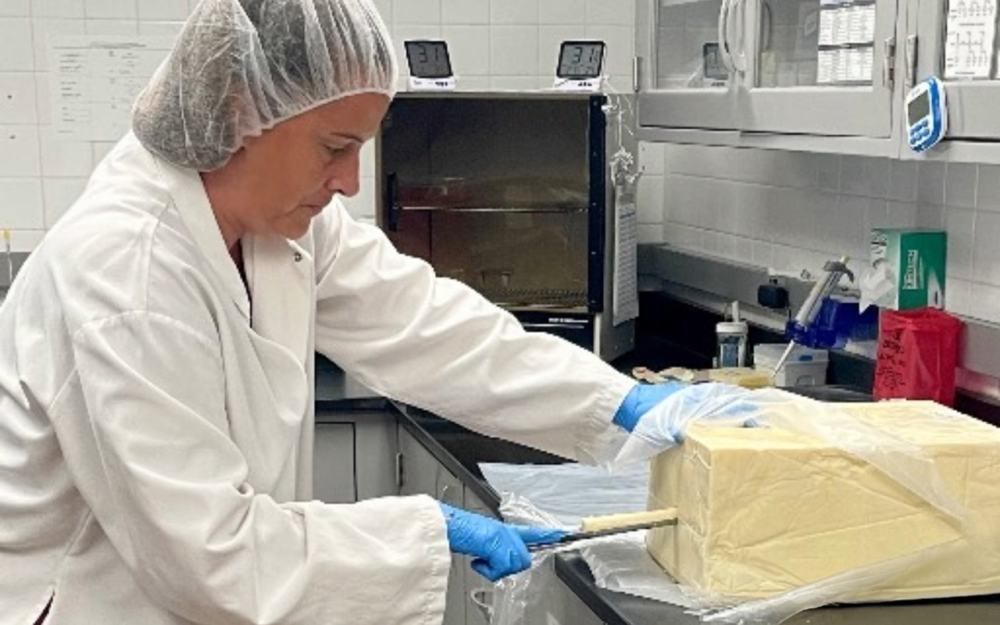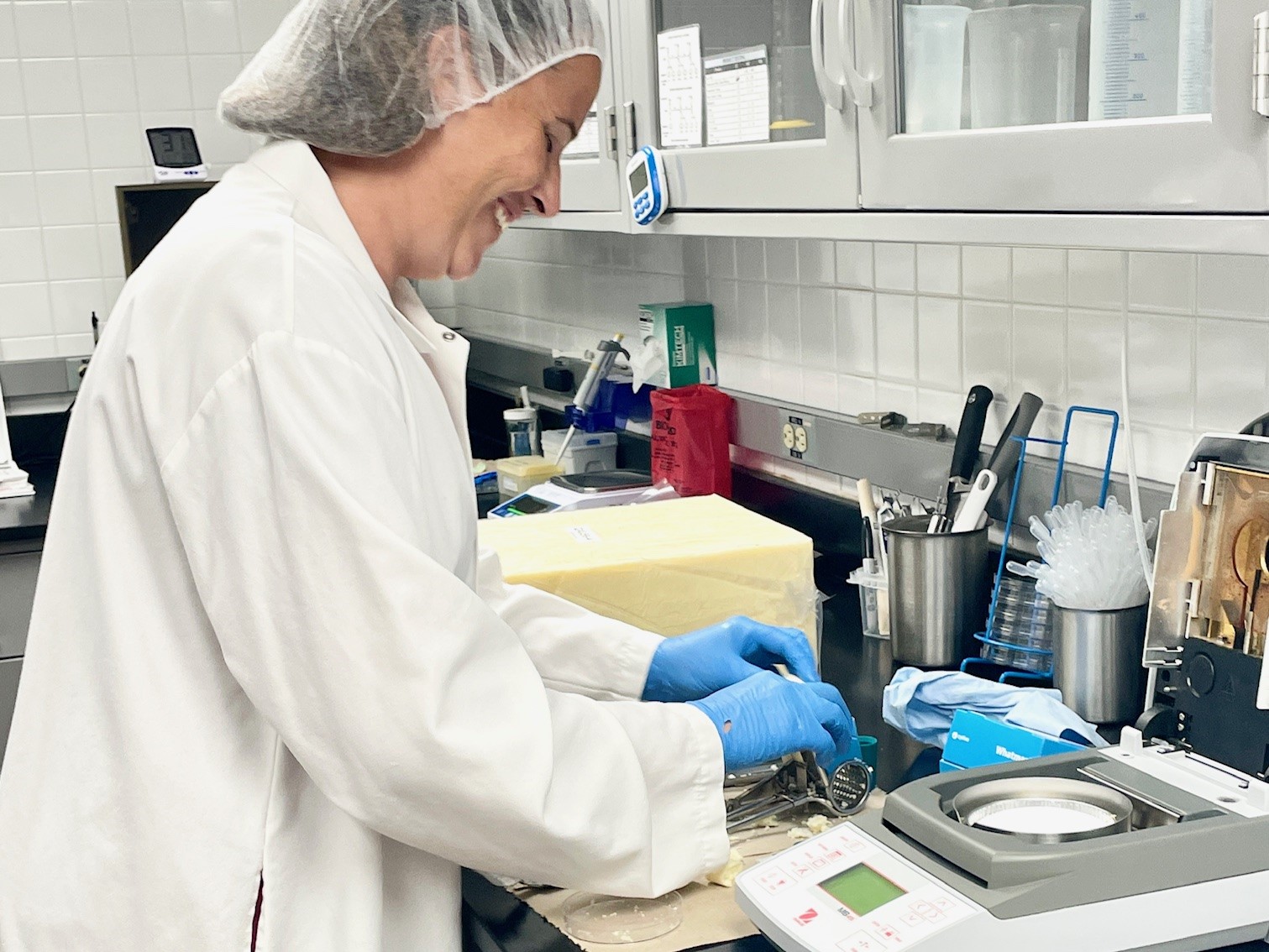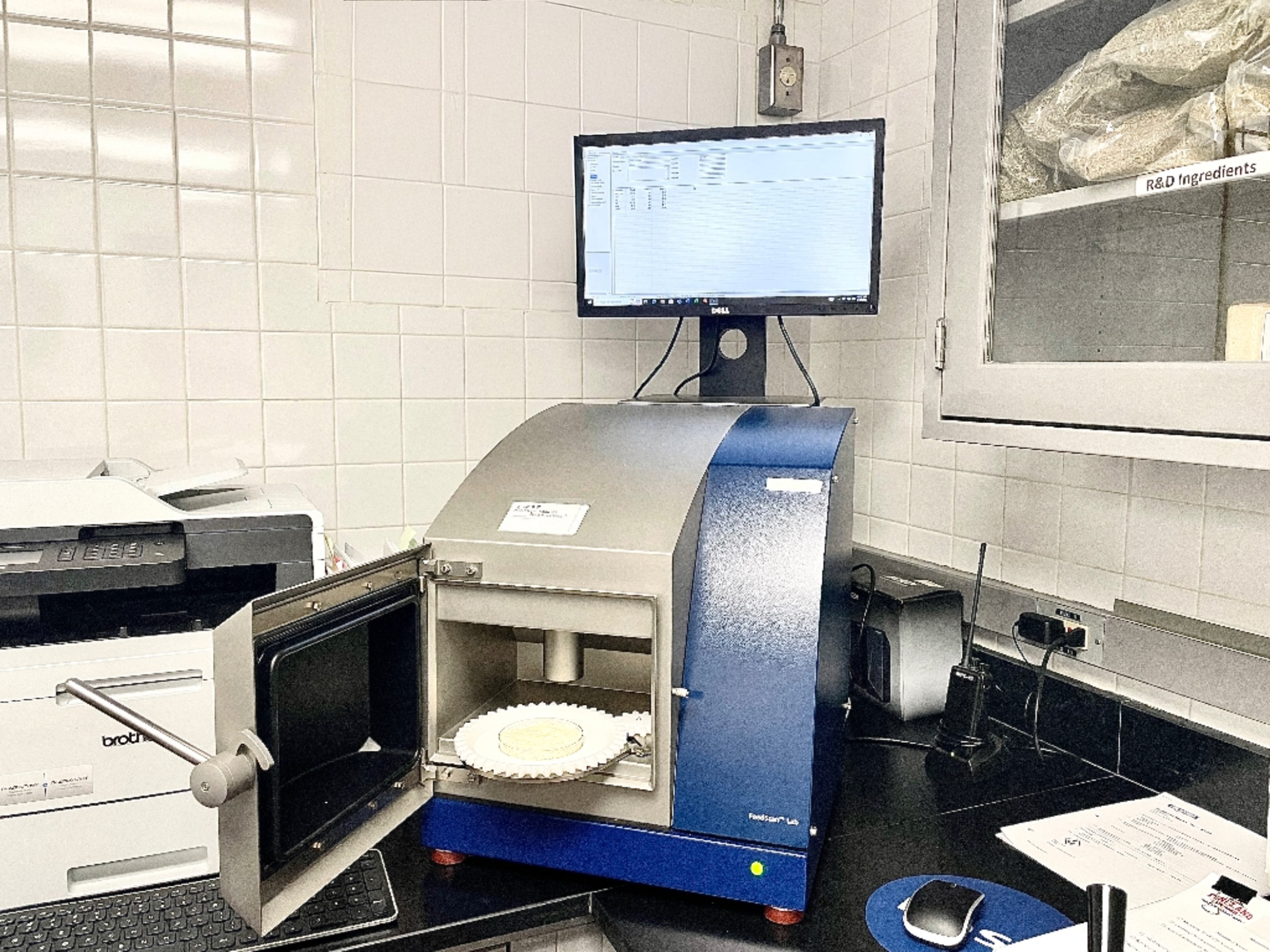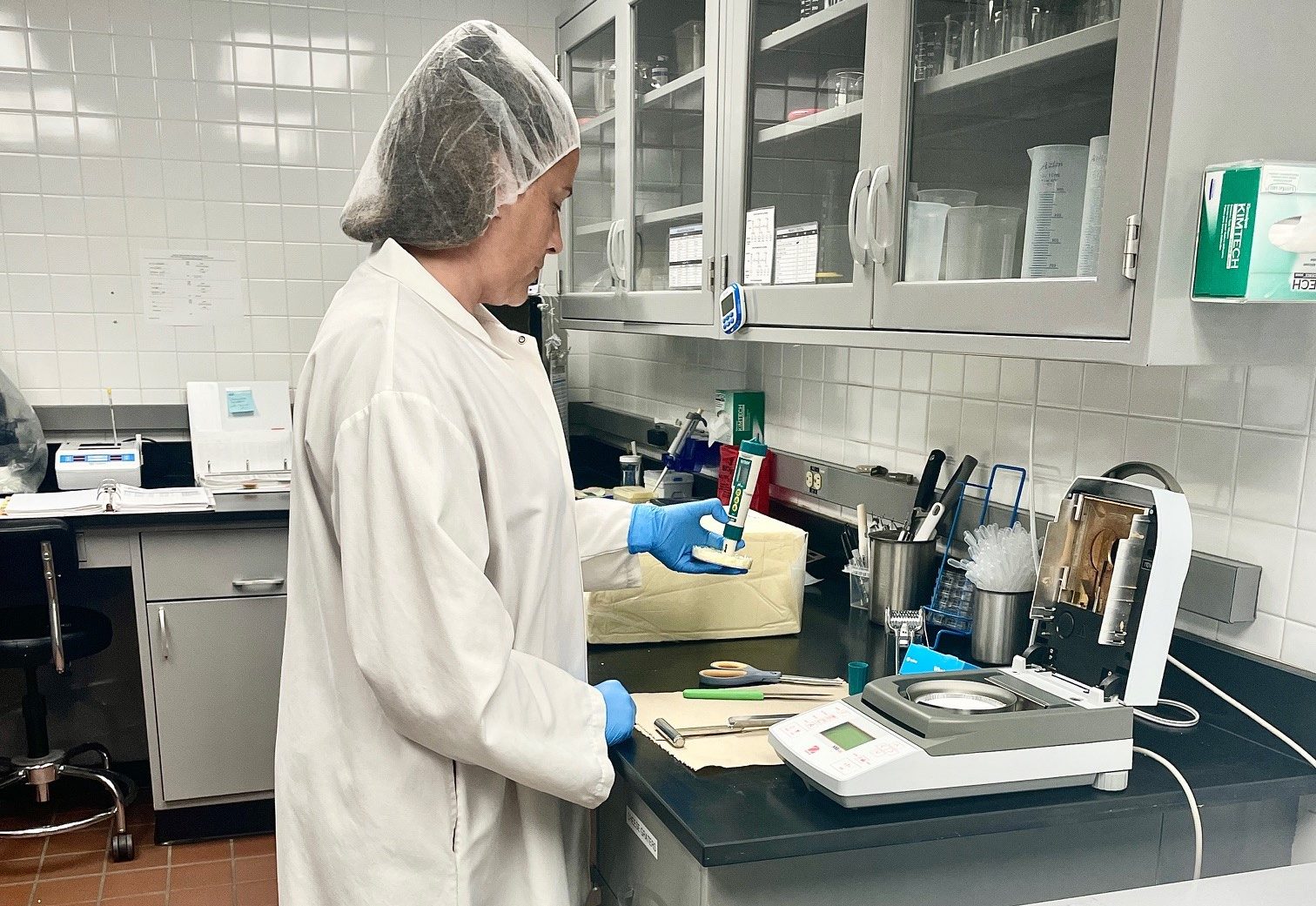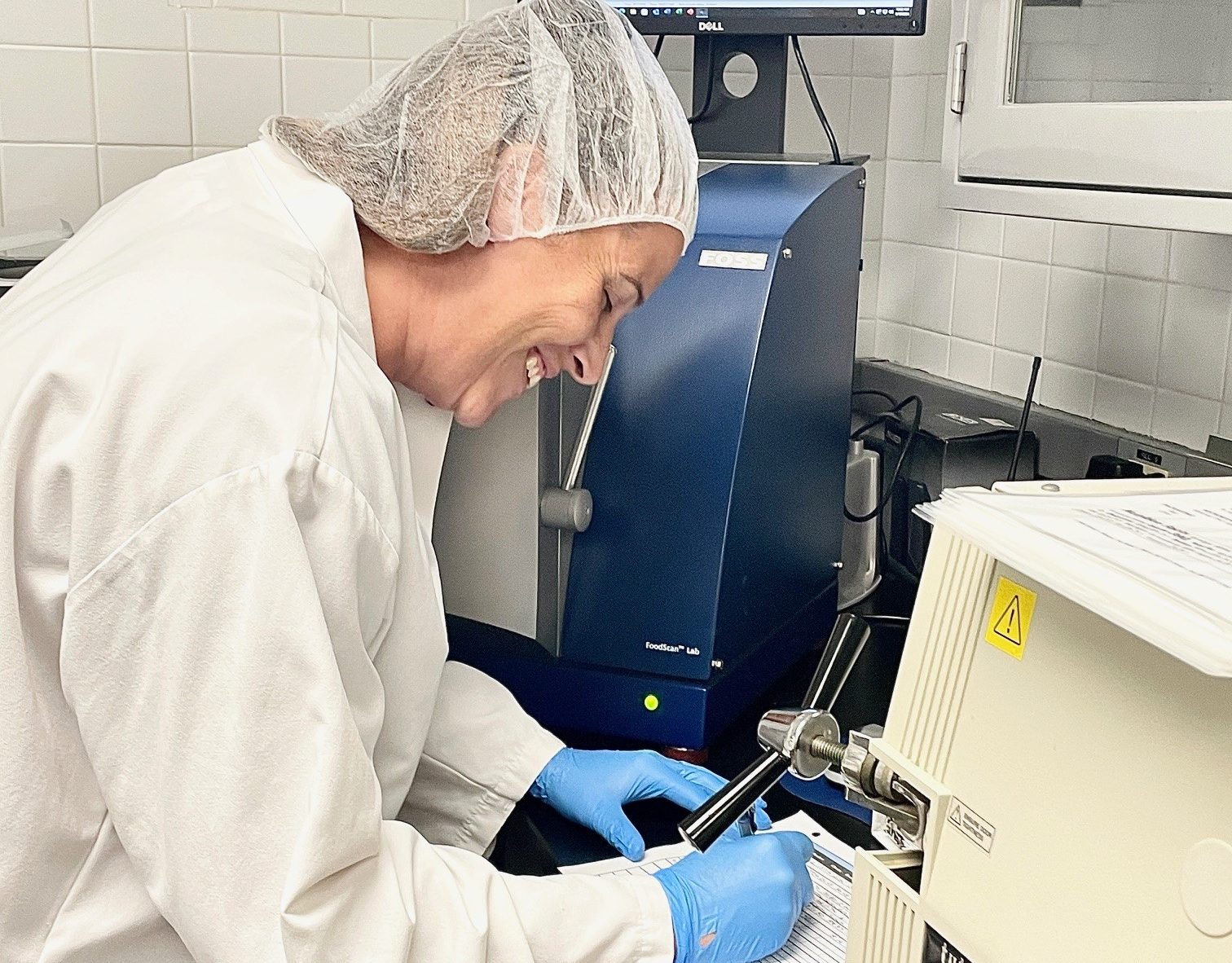A Day in the Life of Quality Control
Behind the Scenes at Pineland Farms Dairy
By Brandy Raymond
September 24, 2024
Want to learn more about our behind-the-scenes processes?
Sign up for our newsletter for monthly updates, recipes, and more insider stories!
Quality Control: The Heart of Pineland Farms Dairy
At Pineland Farms Dairy, we take great pride in ensuring that every block of cheese meets our high standards for quality, flavor, and safety. Recently, I had the chance to witness this meticulous process firsthand. During my visit, I was guided by Brittney Comstock, a dedicated team member who has been with us for 2.5 years and is deeply passionate about cheese. Brittney took me through a typical day in the quality control lab, showing me the step-by-step processes she uses to grade each batch and guarantee that our products maintain the high quality Pineland Farms is known for.
Step 1: Sampling the Cheese
One of the first steps in quality control is taking a core sample from each block of cheese. Brittney demonstrated this process using a cheese trier—a specialized tool designed to pull cores from cheese blocks. Each core comes from a different batch, allowing us to assess consistency and quality across the board.
Step 2: Preparing the Sample for Testing
Once a core is taken, it is carefully ground and packed tightly into a petri dish. This preparation step is crucial: it eliminates any air pockets that could skew the results of the tests that follow. Proper handling is essential at this stage, with strict sanitary measures in place—gloves, plastic coverings, and other protective gear ensure no contamination occurs.
Step 3: Analyzing with the Food Scanner
The packed petri dish is then placed into a food scanner—a high-tech device that measures key components like moisture, salt, and fat content. This device is pre-loaded with specifications for different types of cheese. For instance, when testing a block of Gouda, the moisture should be under 39%, and the salt and fat content must also meet specific targets. The scanner uses a precise lens to analyze the sample in about 30 seconds, with results appearing on the screen almost instantly.
What is a Food Scanner?
A food scanner is an advanced analytical tool used in food quality control. It uses near-infrared (NIR) spectroscopy to quickly and accurately assess the composition of food products. This technology measures parameters such as moisture, fat, protein, and salt content by analyzing the interaction between light and the food sample at specific wavelengths. The FoodScan, made by Foss, performs non-destructive testing, ensuring rapid and reliable results without compromising the sample. This makes it an essential device for maintaining consistent quality standards in food production and processing.
Step 4: pH Testing and Further Calibration
While the food scanner provides detailed readings for moisture, salt, and fat, the pH is tested separately using a dedicated pH meter. The pH levels are essential for determining the flavor and texture of the cheese. For Gouda, a perfect pH level is between 5.1 and 5.4. To ensure accuracy, the lab periodically uses independent moisture and chloride analyzers to recalibrate and verify the food scanner’s readings.
Step 5: Meeting the Specs – Ensuring Perfection Every Time
All the data gathered from these tests—moisture, salt, fat, and pH levels—are compared to our established specs for each type of cheese. These specs are the result of years of expertise and refinement by our cheesemakers, ensuring that every bite of Pineland Farms cheese is as delicious and high-quality as the last. For instance, a cheddar must have a moisture content under 39% to be labeled “cheddar.” Anything above this threshold means it can no longer be called cheddar. A lower moisture level contributes to the best-aged cheddar.
Meet Brittney Comstock: The Quality Guardian of Pineland Farms Dairy
Brittney Comstock, our quality control technician, plays a crucial role in safeguarding the flavor and integrity of our cheese. Testing 3-4 cheeses a day and up to 16 batches a week, Brittney ensures only the best cheeses leave our dairy. “I love what I do,” she says, embracing each batch as an opportunity to perfect our craft. But Brittney’s work is just one part of a larger team effort—everyone at Pineland Farms, from cheese makers to packers, contributes to delivering top-quality products to your table.
Why This Matters: Consistent Quality You Can Taste
These quality tests go beyond routine—they reflect our unwavering commitment to excellence. Pineland Farms Dairy believes in transparency, quality, and supporting local farms. By sharing how Brittney and our entire team ensure each batch meets high standards, we aim to deepen your appreciation for the care that goes into every block of cheese we produce.
Conclusion
Next time you savor Pineland Farms cheese, think of the dedication and teamwork behind it. From Brittney’s precision in the lab to the artisans crafting each batch, every step is vital to delivering the high quality you’ve come to expect from Pineland Farms Dairy.

